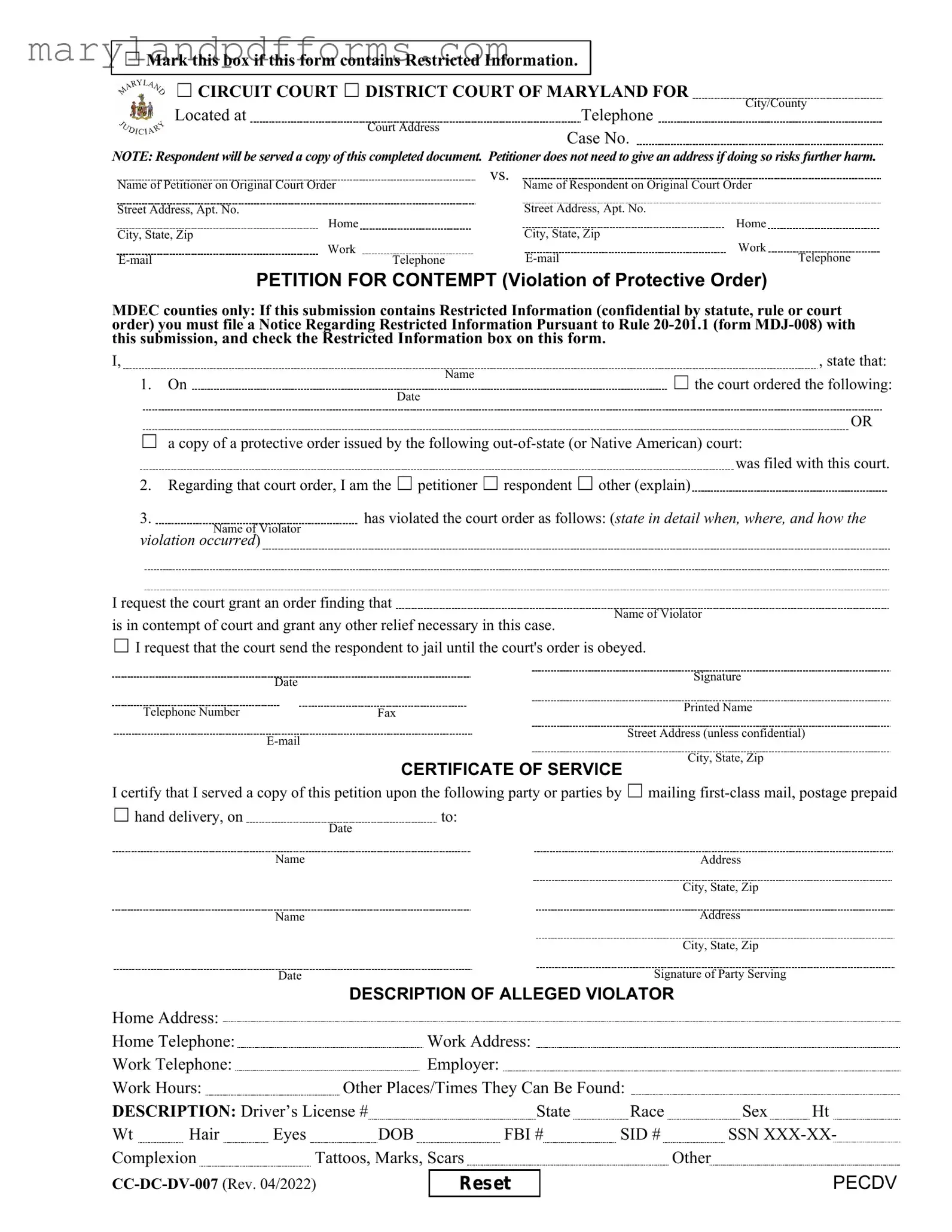The Maryland Petition For Contempt form is used to request the court to take action against someone who has violated a court order, particularly a protective order. This form allows the petitioner to formally state their case and ask the court to enforce the order. It serves as a legal tool to address non-compliance and seek necessary remedies, which may include jail time for the violator until they comply with the court's order.
Who can file a Petition For Contempt?
Any individual who is affected by a violation of a court order can file a Petition For Contempt. Typically, this includes the petitioner or respondent named in the original court order. If you believe that someone is not following the court's directives, you have the right to seek enforcement through this petition.
When filling out the Petition For Contempt form, you will need to provide specific details, including:
-
Your name and contact information.
-
The name of the person you believe has violated the court order.
-
A detailed description of how and when the violation occurred.
-
The original court order details, including the date it was issued.
It’s important to be as clear and detailed as possible to help the court understand the situation.
What happens after I submit the Petition For Contempt?
Once you submit the Petition For Contempt, the court will review the document. The respondent will be served a copy of the petition, and a hearing may be scheduled. During this hearing, both parties will have the opportunity to present their sides. The court will then decide whether the violation occurred and what actions to take next.
Can I request jail time for the violator?
Yes, you can request that the court send the violator to jail until they comply with the court's order. However, the court will consider various factors before making such a decision. It is essential to provide compelling evidence of the violation and explain why this action is necessary. The court aims to ensure that any response is fair and just based on the circumstances.
